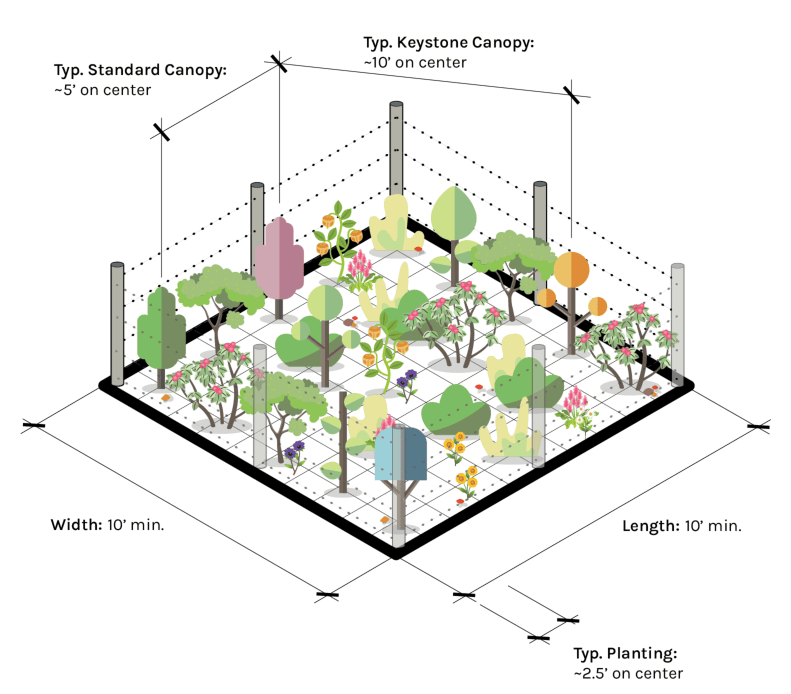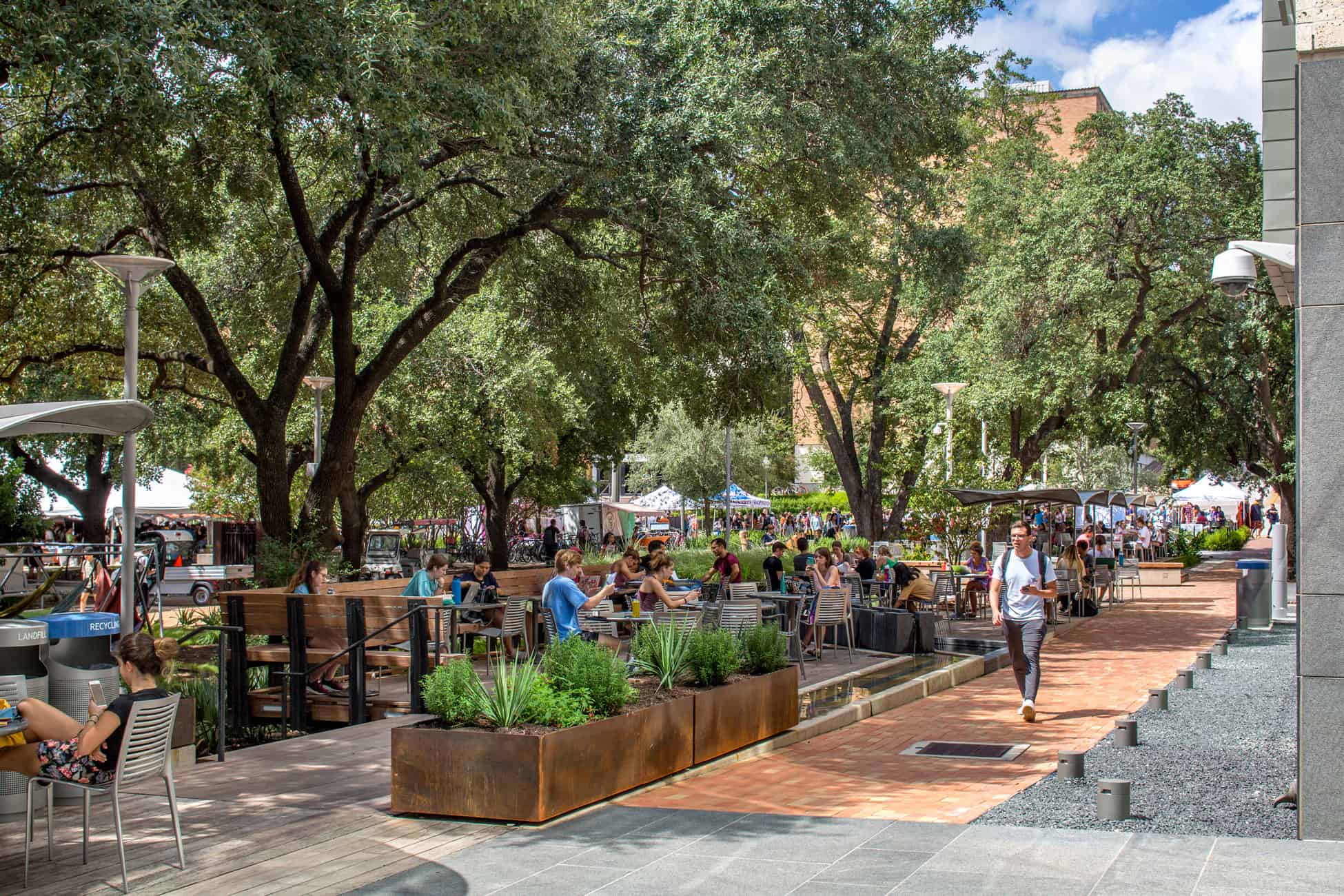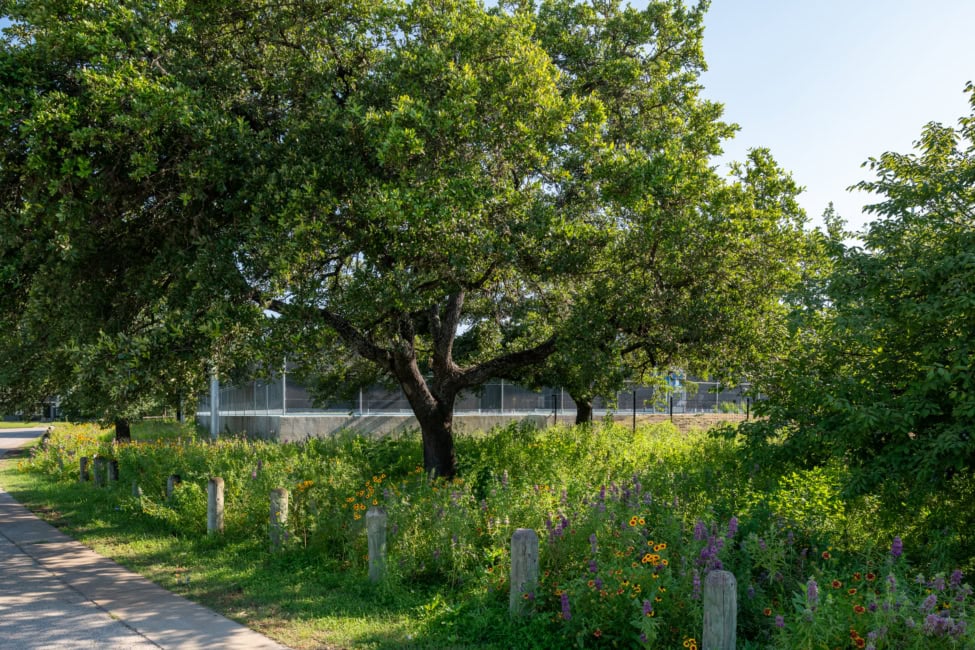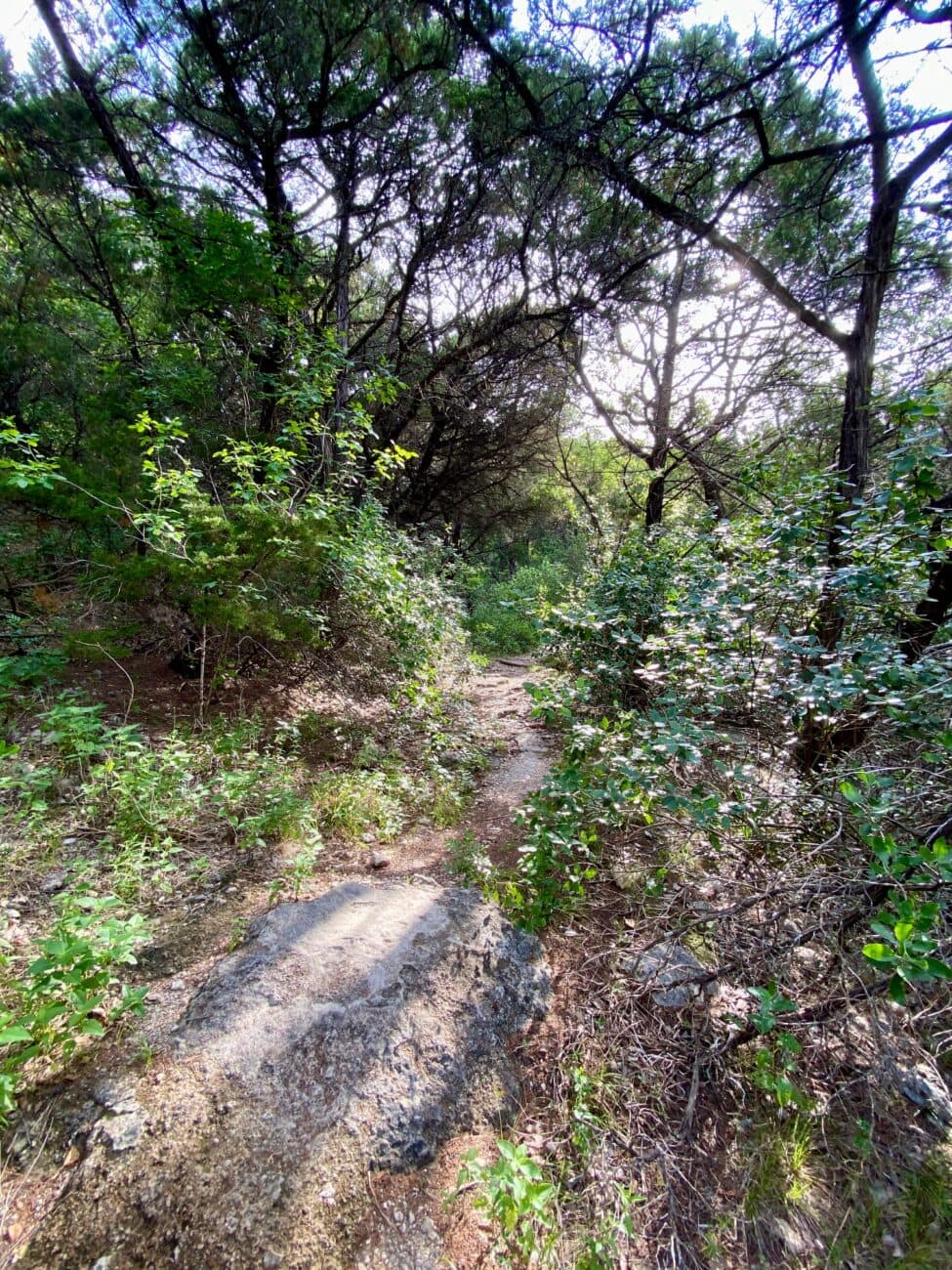In the battle against climate change, trees are our silent but steadfast allies. They absorb carbon dioxide from the atmosphere, store carbon in their biomass, and release oxygen. This natural process, known as carbon sequestration, plays a crucial role in mitigating climate change. Here in Austin, our tree-loving city has pledged to increase our current city-wide 41% canopy cover to 50% by 2050. Please see the Climate Equity Plan for more information.
As an Austin-based landscape architecture firm committed to doing everything we can to slow climate change, we understand the profound impact that tree plantings have on our environment. Below we explore in more detail how trees can mitigate climate change.
Microforests: Maximizing Carbon Capture in Small Spaces
One of our most powerful tree tools to fight climate change are microforests, or Miyawaki forests. These forests have a small footprint, but are densely planted, diverse assemblages of native species designed to mimic natural forests. Despite their small size – typically no larger than a tennis court – microforests sequester a significant amount of carbon. The dense planting encourages rapid growth and biodiversity, which enhances the ecosystem’s resilience and ability to capture CO2. These compact green spaces are perfect for urban areas and can transform underutilized spaces into carbon sinks and wildlife habitats.

Street Trees: Enhancing Urban Landscapes
Street trees are the unsung heroes of urban environments. Lining our roads and sidewalks, they provide shade, reduce urban heat island effects, and improve air quality by absorbing pollutants. The presence of street trees also improves mental well-being and property values, making them an essential community investment. For carbon capture, a mature street tree absorbs about 48 pounds of CO2 annually. Multiplied across an entire city, street trees’ impact is substantial.

Parks & Greenbelts: Oases of Carbon Sequestration
Urban parks are more than just recreational spaces – they are also vital green lungs for our cities. Parks with diverse tree plantings can sequester large amounts of carbon while simultaneously offering residents a place to connect with nature. When filled with a variety of deciduous and evergreen tree species, parks can ensure year-round carbon absorption and resilience against pests and diseases. Additionally, parks provide critical habitat for wildlife and promote biodiversity, further enhancing their ecological value.

Austin is lucky to have a significant amount of undeveloped greenbelts within the urban core due to advocacy efforts of environmentalists in the 1960-70s. By restricting development in these crucial buffer zones, sensitive natural ecosystems are protected, and dense vegetation and extensive tree covered areas can thrive. By preventing urban sprawl, greenbelts help maintain large contiguous areas of forest and grassland that are essential for carbon capture and biodiversity.

The Impact of Trees on Climate Change Mitigation
The collective impact of microforests, street trees, parks, and greenbelts on carbon sequestration is immense. By capturing and storing CO2, trees help reduce atmospheric greenhouse gas concentrations. Additionally, shady green spaces improve air and water quality, enhance biodiversity, and contribute to human health and well-being.
Studio Balcones is committed to maximizing the carbon sequestration potential of our projects while creating beautiful, functional landscapes that enrich the lives of our clients and community. By prioritizing the integration of diverse tree plantings, we can make a significant impact on our environment and contribute to a more sustainable future. As we continue to innovate in our response to climate change, the role of trees will remain ever central to our efforts. GO TREES!
